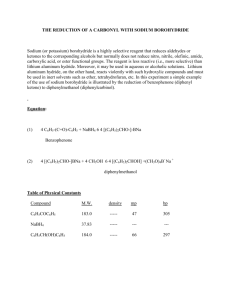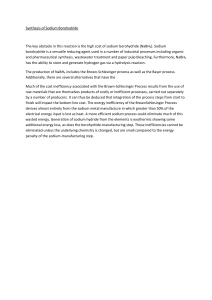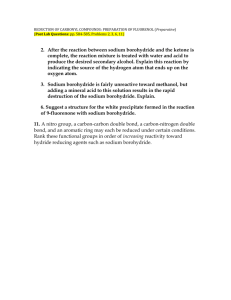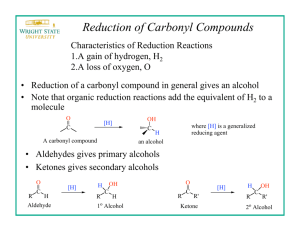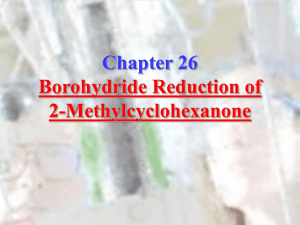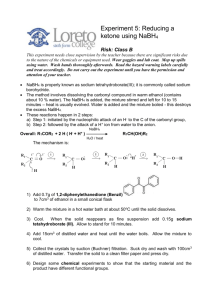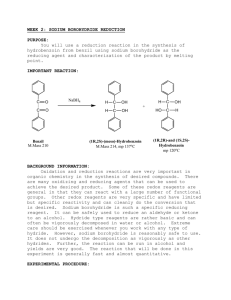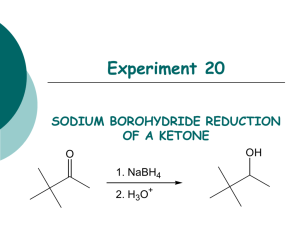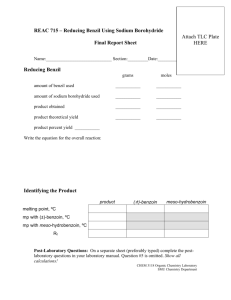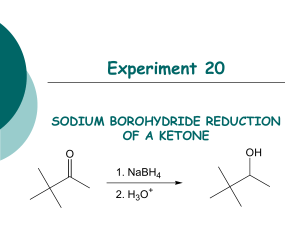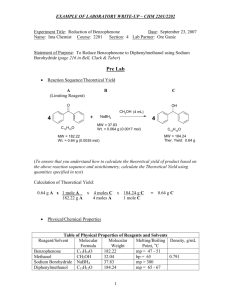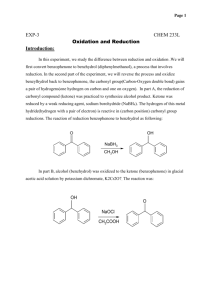Reduction Excercises: 1. Determine the molar ratio of NaBH4 to
advertisement
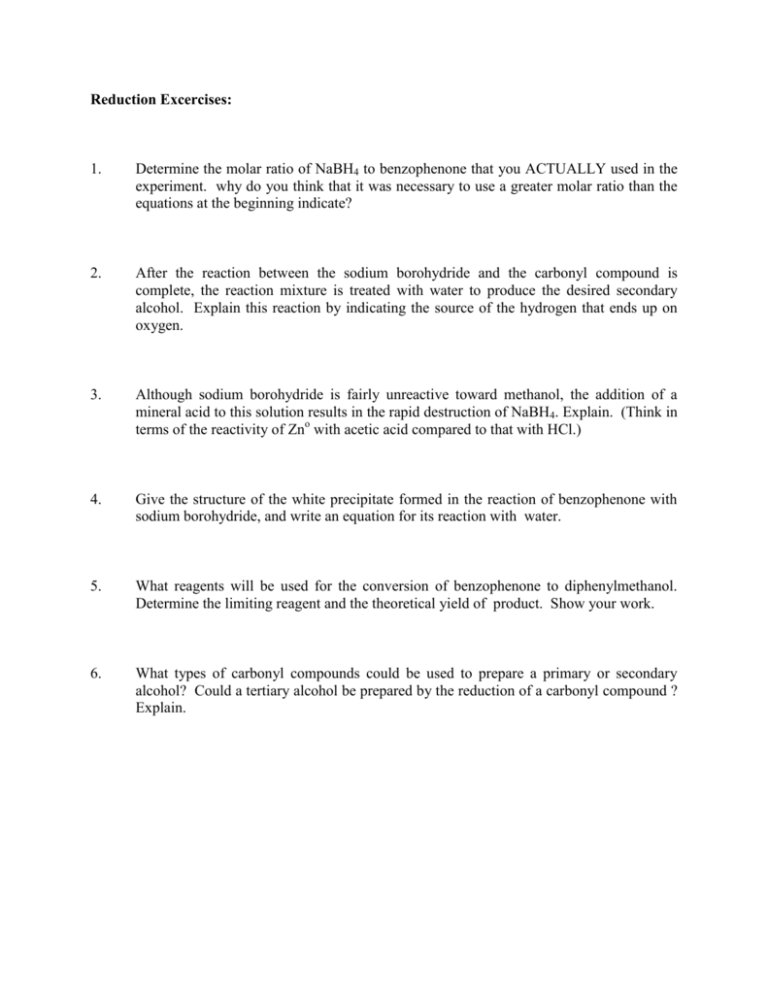
Reduction Excercises: 1. Determine the molar ratio of NaBH4 to benzophenone that you ACTUALLY used in the experiment. why do you think that it was necessary to use a greater molar ratio than the equations at the beginning indicate? 2. After the reaction between the sodium borohydride and the carbonyl compound is complete, the reaction mixture is treated with water to produce the desired secondary alcohol. Explain this reaction by indicating the source of the hydrogen that ends up on oxygen. 3. Although sodium borohydride is fairly unreactive toward methanol, the addition of a mineral acid to this solution results in the rapid destruction of NaBH4. Explain. (Think in terms of the reactivity of Zno with acetic acid compared to that with HCl.) 4. Give the structure of the white precipitate formed in the reaction of benzophenone with sodium borohydride, and write an equation for its reaction with water. 5. What reagents will be used for the conversion of benzophenone to diphenylmethanol. Determine the limiting reagent and the theoretical yield of product. Show your work. 6. What types of carbonyl compounds could be used to prepare a primary or secondary alcohol? Could a tertiary alcohol be prepared by the reduction of a carbonyl compound ? Explain.
